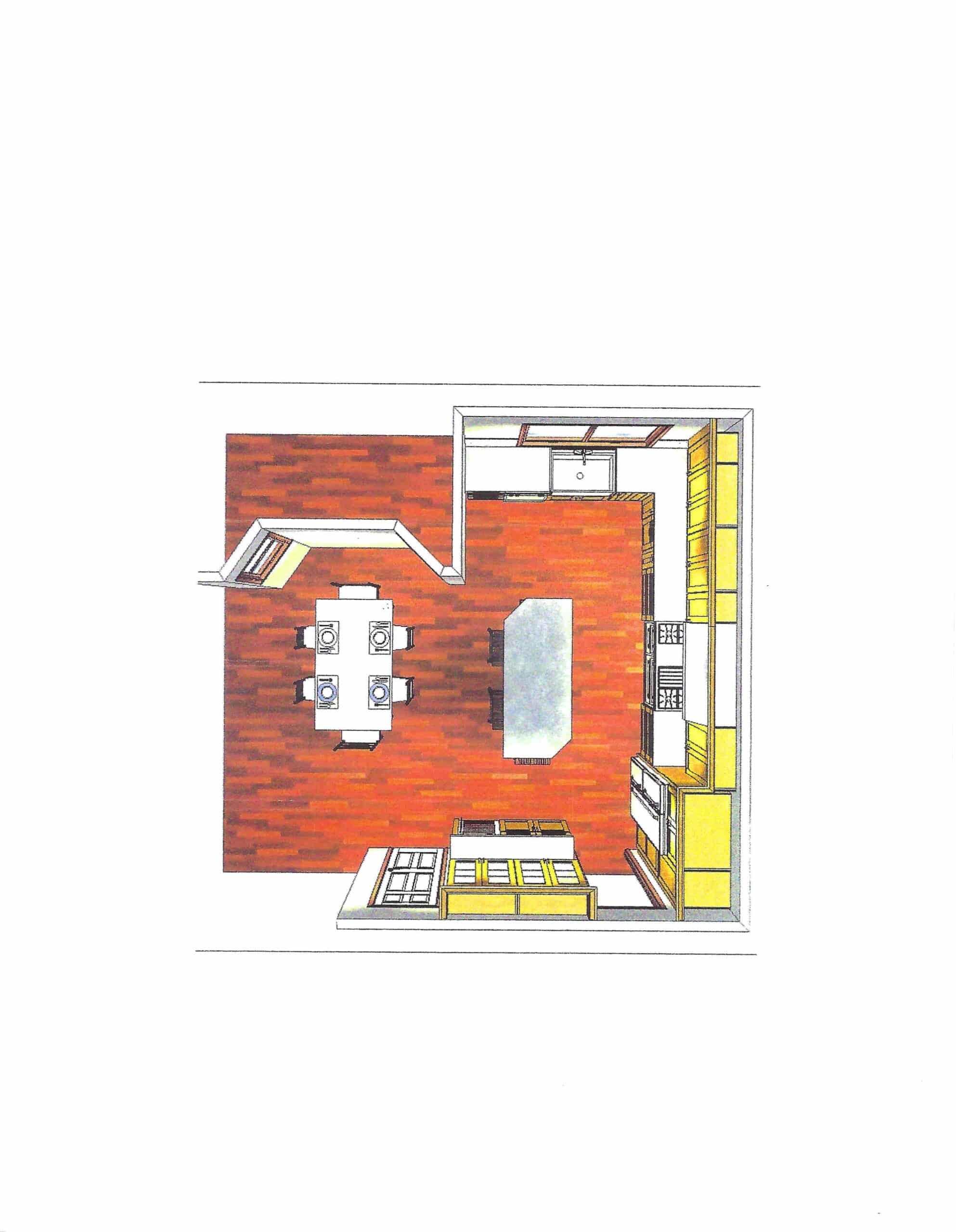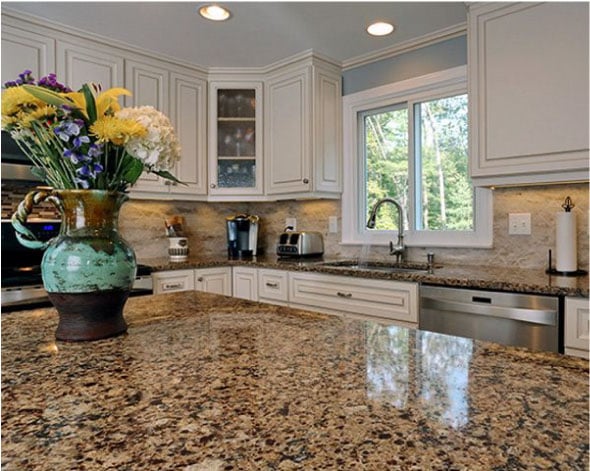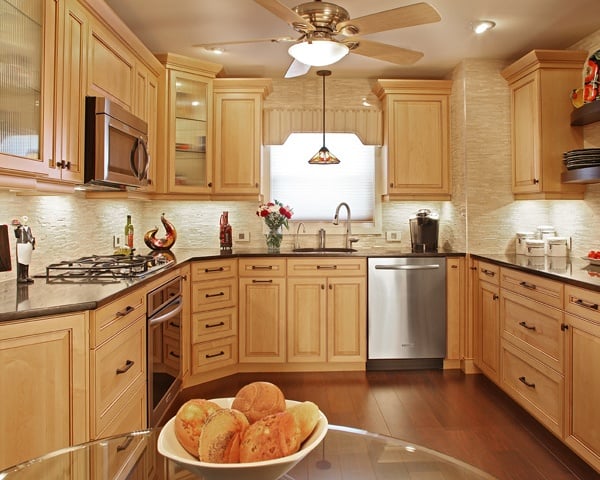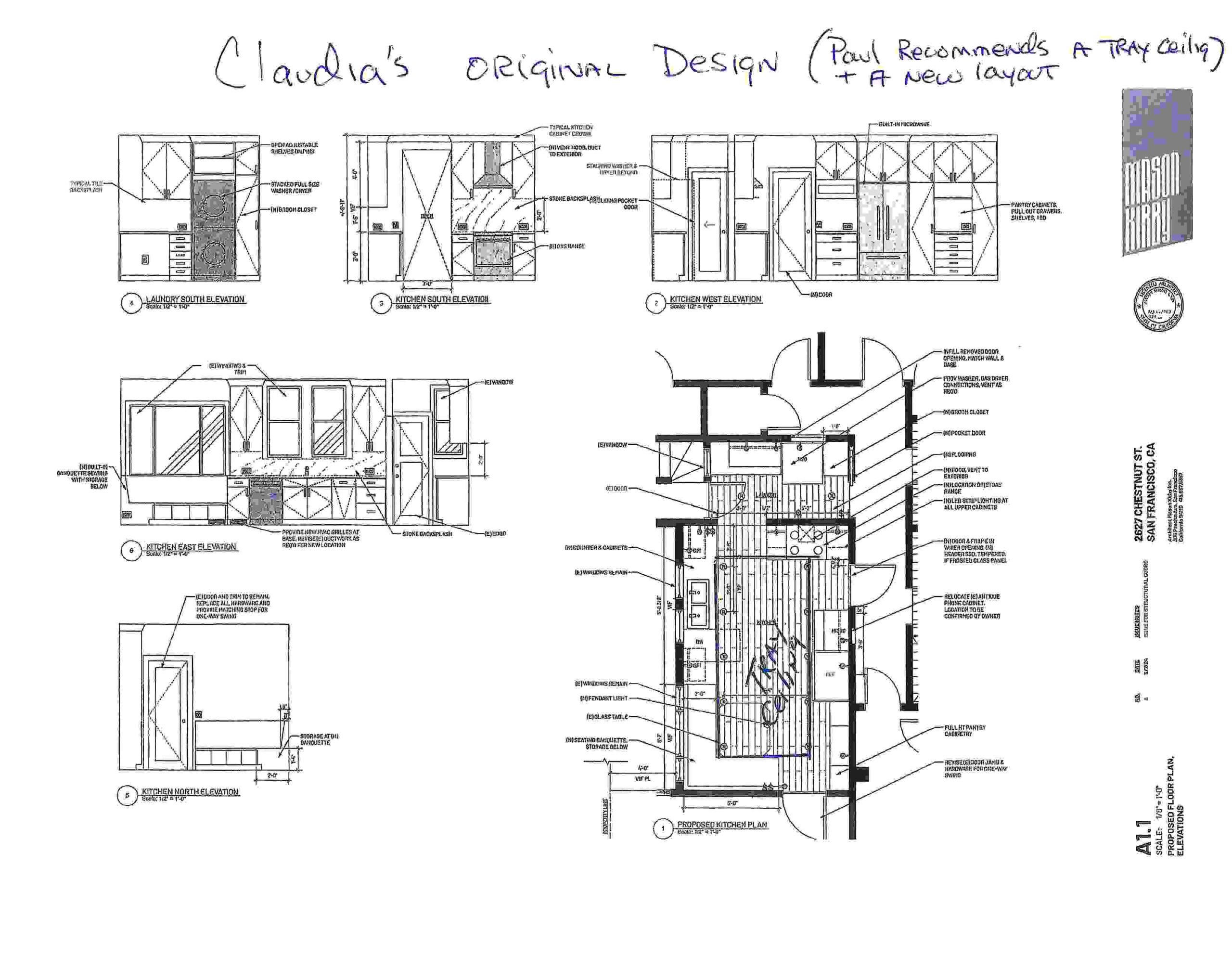Japandi style has become something of a phenomenon recently in interior design circles.
But the trend for Japandi has been a quiet revolution. Unless you’re a regular subscriber to home improvement magazines or you are an interior design devotee, Japandi design may well have passed you by up to now.
But that is about to change!
What is Japandi Design?
So, let’s get straight into things and run through the basics.
What exactly is Japandi? What makes it an inspired choice for a kitchen? And how do you create a Japandi-style kitchen in your home?
A Blend of Japanese and Scandinavian Styles
Essentially, Japandi is a fusion of Japanese and Scandinavian design styles.
The Japanese influence brings a sense of Zen-inspired calmness and tranquility. This is combined with clean lines and a sleek, functional, and minimalist approach.
The Scandinavian side of things brings the famed hygge to the party – a blend of cosy textiles and textures, and warmth in abundance.
The result is a marriage made in heaven and the epitome of beauty and balance for the home.
Simple and Elegant Japandi Style
The simplicity and elegance of the concept make it ideal for the kitchen.
A Japandi style kitchen creates a tranquil space, bringing together calming colour choices, tantalising textures, and natural elements and materials in abundance.
The focus on nature helps to bring a sense of calm to the home. Bearing in mind the busy lives we lead, this is a welcome addition.
A Trend that is Set to Last
The superb blend of the elegant with the functional is a key reason why Japandi kitchens are bound to grow in popularity.
At Kitchen Warehouse, we believe that the Japandi kitchen is a trend that will remain popular for years to come.
Sometimes you just know that a trend is destined to be much more than a passing fad.
The principles of the style are so strong – and so successful when seen in practice – that it is difficult to imagine a Japandi influence no longer being a constant in kitchen space design in decades to come.
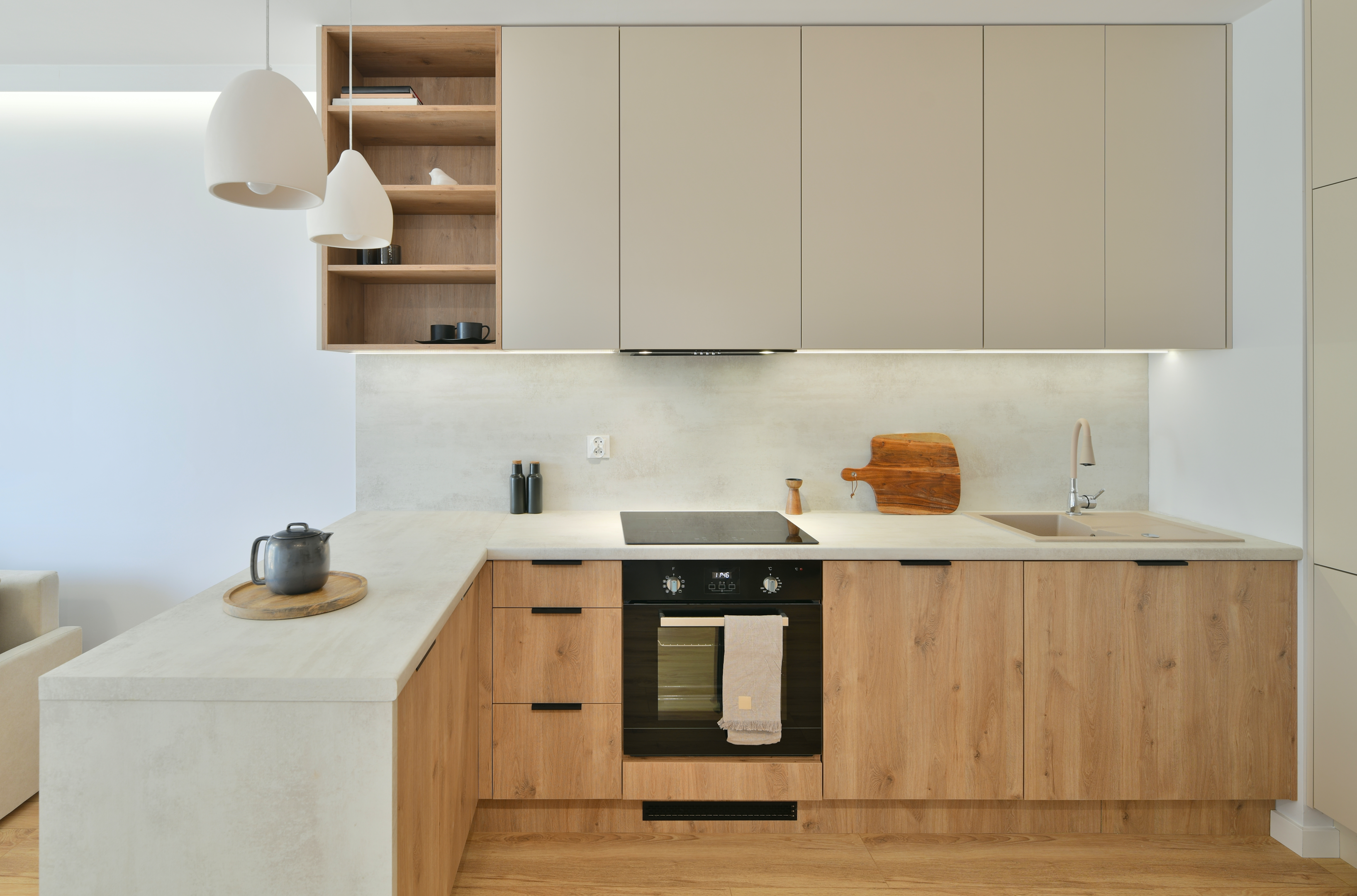
The Origins of Japandi
Although a Japandi kitchen is a relatively new trend within the world of interior design, the concept itself goes back a long way.
In fact, its origins can be traced right back to the end of the nineteenth century, when Scandinavian designers first began to be influenced by ideas emanating from Japan.
Over a century later, interior designers and homeowners alike are really now embracing the concept.
Two Design Traditions With Many Similarities
The design traditions of Japan and Scandinavian countries have much in common.
Both seek to connect with the natural world, and both share a penchant for the use of high quality natural materials.
Scandinavian and Japanese craftsmanship also share a clear focus on functionality.
All of these similarities shine through when you see a Japandi-inspired room.
There Are Differences Too
There are differences as well, of course.
When it comes to choice of colour, the typical Scandinavian preference is for soft pastel tones and a neutral colour palette. Lighter woods are usually employed in home designs across Scandinavian nations.
However, the aesthetic of Japanese design means that it tends to utilise stronger colour choices and dark woods.
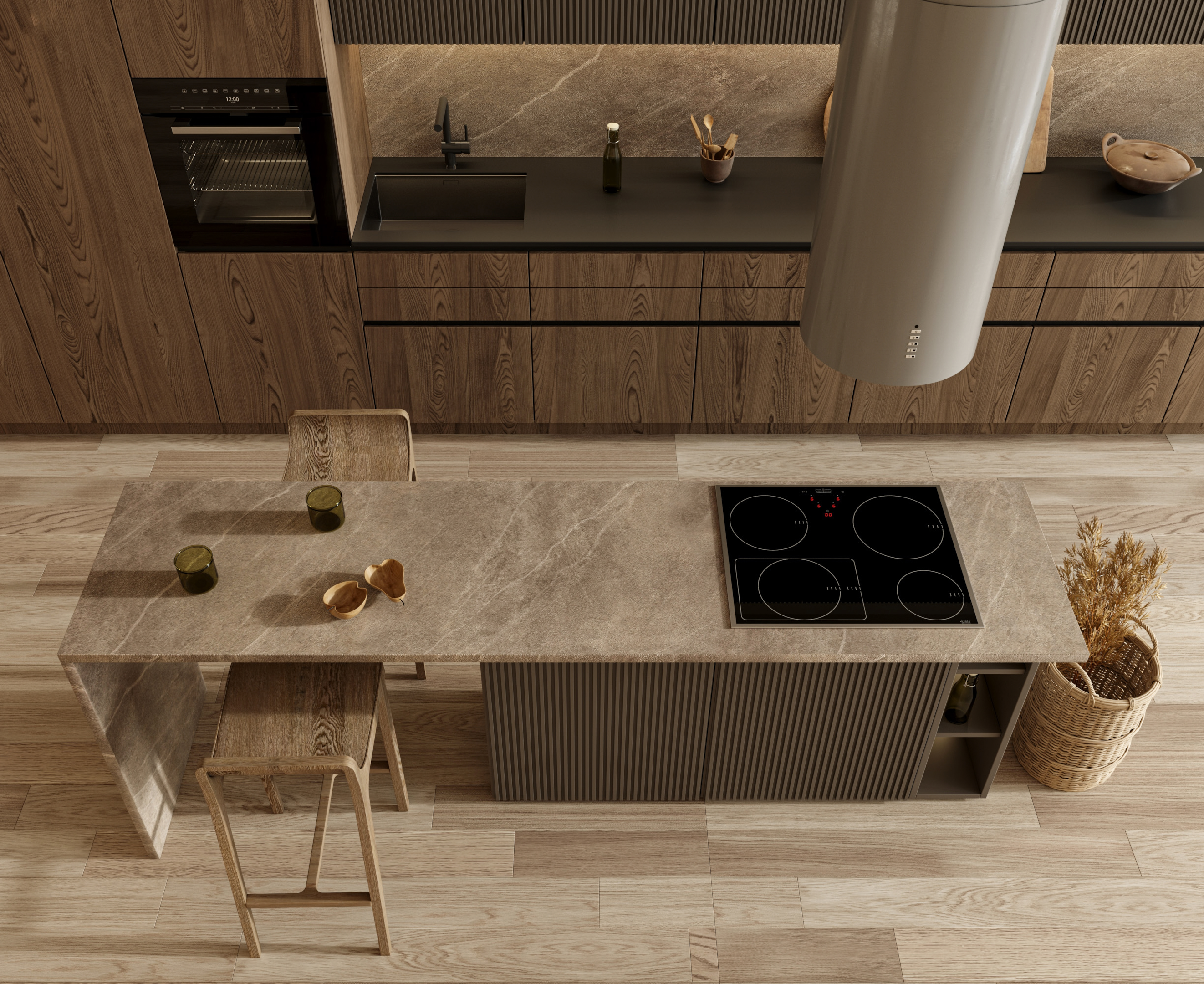
Japandi Brings These Elements Together
All in all, it is a shared design philosophy that focuses on balance, simplicity, and sustainability that makes Japandi designs work so beautifully.
How to Bring the Styles Together to Create a Japandi Inspired Kitchen
If you want to embrace the style of Japandi kitchens in your home, following these design tips will stand you in good stead.
And you are bound to be thrilled with the results you achieve in your home!
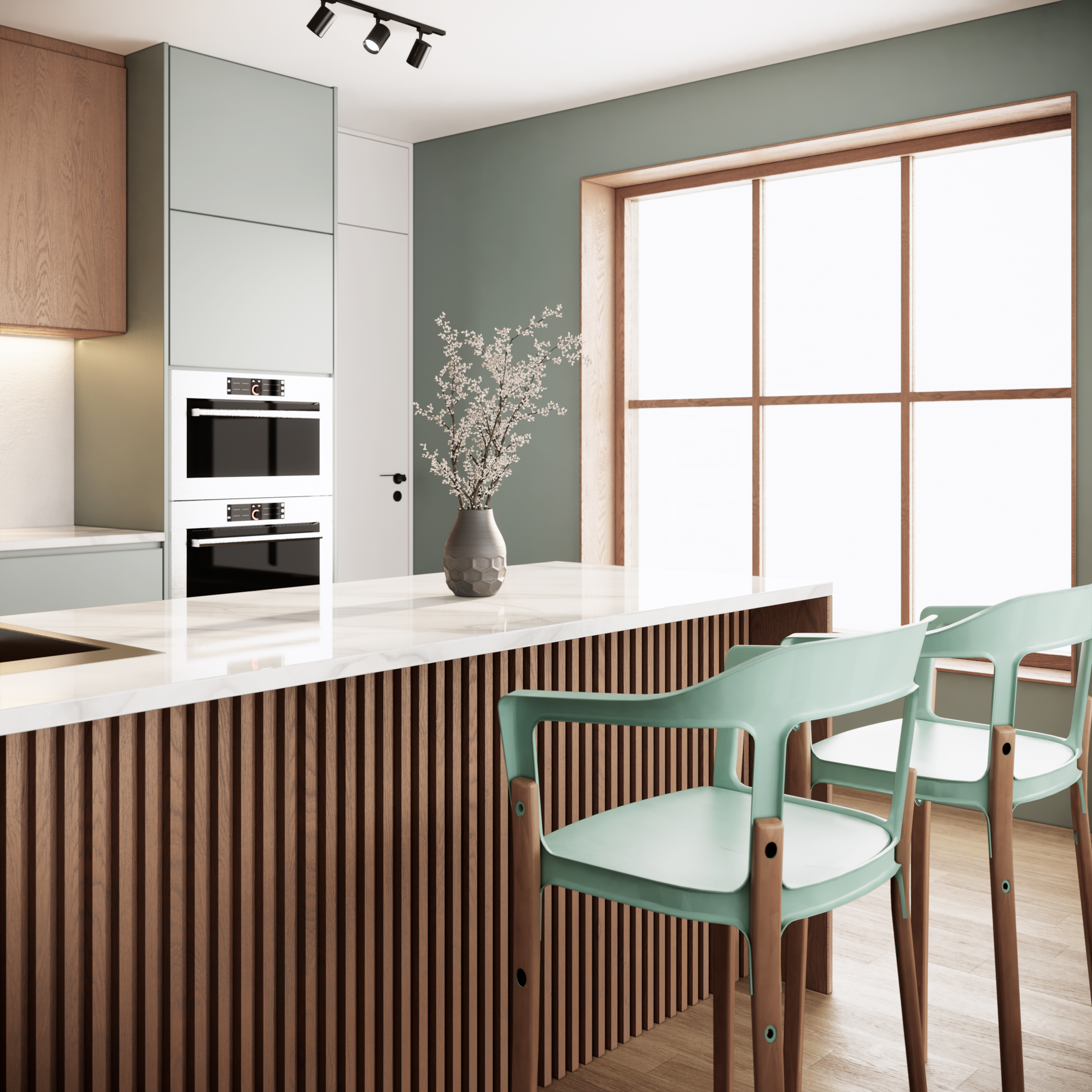
The Importance of Space and Light
Creating space and light is an important consideration in any kitchen, but in a Japandi-inspired kitchen space, it is fundamental. It is central to the whole ethos and spirit of the concept.
Japandi style is all about creating a calming and airy kitchen space – the perfect complement to everyday life.
Therefore, the clean lines of handleless units make for an excellent choice of kitchen cabinetry. Whether seen on the units of a central kitchen island or along a run of base or wall units, the handleless style – with its sleek and minimalist look – is an ideal choice.
You should also make the most of whatever natural light you have.
Use a Neutral Colour Palette
The best way to emulate Japandi style is to choose softer, neutral, and more muted tones. These are the perfect light Japandi colours.
Think beiges and creams – and contrast with the likes of pale and soft shades of blues, greys, or pinks.
Feel free to incorporate some darker Japanese-flavoured tones too to create added visual appeal for your Japandi kitchen.
Calming colours, white cabinetry, and neutral shades are the order of the day.
Metallic appliances, accessories and lighting features can add further depth to the overall design.
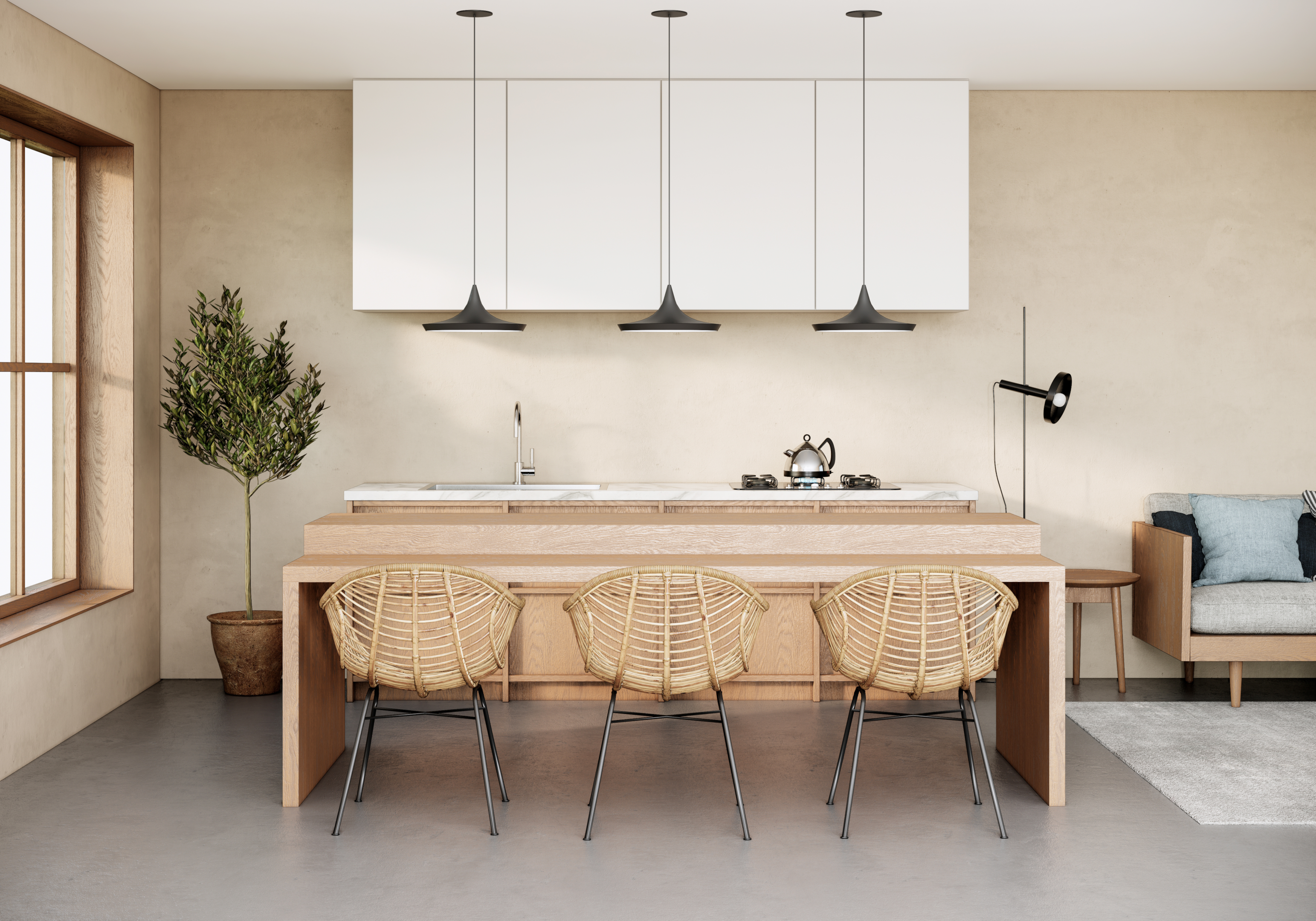
Embrace Natural Textures and Materials
Both Scandi and Japanese design styles favour the use of natural materials in a Japandi kitchen. Quality materials are a prerequisite, including the likes of quartz worktops or natural stone. Natural materials, earthy tones, and rich woods – such as oak and walnut – are inspired choices.
For an extra welcoming and comforting touch, consider the addition of Scandinavian-inspired textures and layers.
Celebrate Quality Craftsmanship and Natural Materials
If the style is simple, and the cabinetry is well-made and utilises natural wood, you will create the perfect Japandi kitchen environment. Focus on minimalism, balance, and the simple pleasures of life in your design choices.
This is central to the Japanese concept of interior design.
Bring Nature and The Outside In
If you want your dream kitchen to have a Japandi feel, forge a link with the natural world in your kitchen design.
Green houseplants will bring the whole design together in true, understated style.
Less Is More
Clutter is an enemy of Japandi.
‘Less is more’ should be your mantra. You should keep minimalism, clean lines, and simplicity at the forefront of your thinking when you put your design cap on.
Keep the ambience focused on nature and the functional at all times, and only add extra furnishings and accessories if they genuinely add something to the overall effect.
Last But Not Least: Go For Balance And Harmony
Above all, you should never lose sight of the desire for balance and harmony.
Keep things simple to achieve a sense of calm across the space.
Why not start creating your Japandi kitchen today?
And don’t hesitate to get in touch to find out more about how to create your perfect kitchen.


